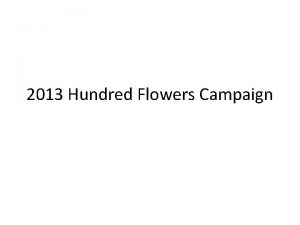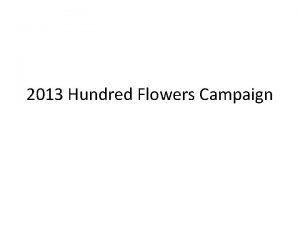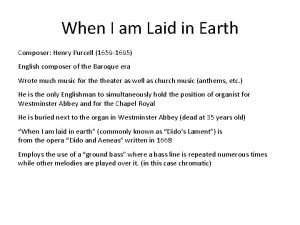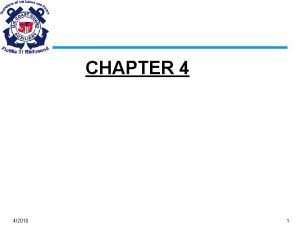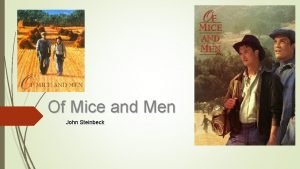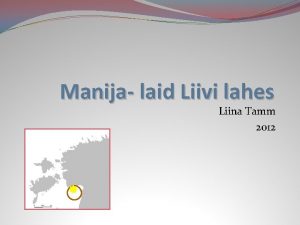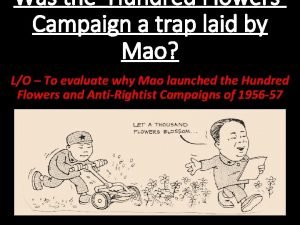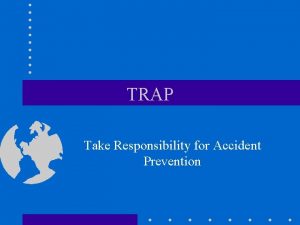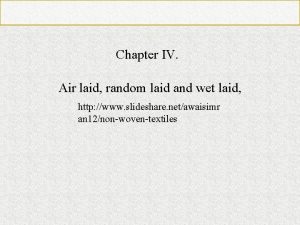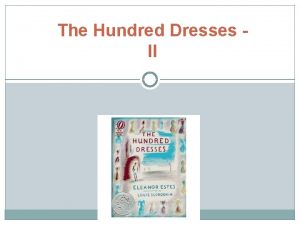Was the Hundred Flowers Campaign a trap laid













- Slides: 13

Was the ‘Hundred Flowers’ Campaign a trap laid by Mao? L/O – To evaluate why Mao launched the Hundred Flowers and Anti-Rightist Campaigns of 1956 -57

Impact of the First Five Year Plan • By 1956 the rapid industrialisation of the First Five Year Plan was putting Chinese society under terrific strain and anger was growing towards the CCP. • The urban population had doubled to over 100 million which caused overcrowding, food shortages and housing problems. • The implementation of higher-stage cooperatives had also deprived China’s 300 million peasants of their land rights.

The Hundred Flowers Campaign • Mao himself had travelled extensively around China during the 1950 s, receiving a rapturous reception wherever he went. This convinced him he was in touch with the people. • Mao decided that greater freedom of expression would allow people to constructively comment on the problems facing Chinese society. He even refused to punish the writer Hu Feng who publically criticised Marxist-Leninist values. • He believed that the intellectuals of China, through open debate, would come to realise the benefits of socialism for China.

The Hundred Flowers Campaign • In February 1957, Mao gave a speech to leading Party workers called, ‘On the Correct Handling of the Contradictions Among the People’. • He argued that whilst the Five Year Plan was a success, CCP officials had acting with heavyhandedness in applying policy. • Quoting from history he said: ‘Let a hundred flowers bloom; let a hundred schools of thought contend’…’Our society cannot back down, it could only progress… criticism of the bureaucracy is pushing the government towards the better. ’

The Hundred Flowers Campaign • Mao immediately called on intellectuals to criticise Central Government directly. By the summer of 1957, millions of letters were pouring into government offices across the country. • People spoke out at CCP meetings, held rallies in the streets and hung huge wall posters criticising the First Five Year Plan. • They protested against: Party members enjoying privileges, economic corruption, low living standards, the harshness of previous mass campaigns and the slavish following of Soviet models. Even Mao himself was criticised.

Bring every positive factor into play, correctly handle contradictions among the people Diaodong yiqie jiji yinsu zhengque chuli renmin neibu maodun (��一切�极因素正 确�理人民内部矛盾 )

The Anti-Rightist Campaign • By July 1957, the protests had become too much for Mao. He believed it had gone beyond ‘healthy criticism’ and had reached ‘harmful and uncontrollable’ levels. He ordered a halt to the campaign. • Immediately, an ‘Anti-Rightist’ campaign was launched to repress criticism led by Deng Xiaoping. Leading critics were forced to retract their statements. • University staff, school teachers, scientists, economists, writers and artists – many of the best minds in China – were forced to make selfcriticisms and submit to ‘re-education’.

Savagely attack and hurt the rightists elements, to protect the results of socialism!

The Anti-Rightist Campaign • The Party was also purged of members who had been too open in their criticisms. By the end of 1957, 300, 000 people had been labelled ‘rightists’ and had to undergo re-education through labour. • Thousands were sent to the countryside for ‘thought reform’. Others were sacked from their jobs. Free speech was banned and the press became heavily censored. • The famous Chinese writer Ding Ling was purged from the CCP and banned from writing. Countless others were killed or committed suicide.


Was the Hundred Flowers a trap? • There is much debate about Mao’s motives for the Campaign and historians have drawn some sharply different conclusions about Mao’s motives in launching the campaign: 1. One school of thought argues that he genuinely encouraged free speech and criticism but was shocked by the reaction and then clamped down on his critics. 2. The other school of thought believes that the Campaign was a deliberate plan by Mao to flush out critics of the government and CCP.

Effects of the Hundred Flowers • Make sure you can remember at least 2 effects of the campaign: 1. The Hundred Flowers campaign, and the anti -rightist campaign into which in evolved, silenced criticism of the communist regime for a generation. 2. Party unity was strengthened. 3. Mao’s position was unchallengeable. 4. Intellectual life in China came to a virtual standstill. It wasn’t until the 1980 s when many were pardoned that intellectuals felt free again.

What is the meaning of this cartoon?
